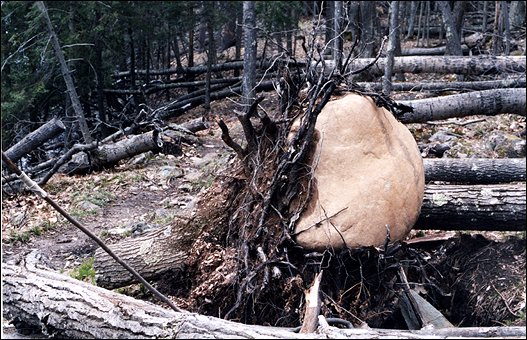
|
|
||||
Why Sell Timber?
|
|
Your forest land represents one of your most valuable assets. How it is managed and, in particular, how and when trees are harvested and marketed can dramatically affect your income, the future value of the forest, and how well it provides other desired amenities. There are several reasons why you might decide to sell timber. First, obviously, the forest represents a source of income. While the value of the timber in a woodland will vary depending on many factors, timber can have considerable value and can be managed to yield periodic or emergency income. Second, timber cutting is one of a forester's major management tools and is useful not only for generating income, but also for accomplishing other ownership objectives such as improving the health and vigor of the forest, developing wildlife habitat, altering species composition, establishing planting areas, creating vistas and trails, and developing certain types of recreational activities. If you have worked with a professional forester to develop a management plan for achieving ownership objectives, it is quite likely the plan will call for periodic timber harvesting. |
Third, timber may be harvested to salvage the value of trees that have been damaged to such an extent that they will not recover or to salvage the value of trees growing where the potential for damage is extremely high. Ice, wind, snow storms, fire, insects, and disease are factors that could cause enough damage to justify a salvage cutting. Fourth, a harvest schedule is required by Michigan forestry property tax laws (Qualified Forest Property Program and Commercial Forest Program). Failure to follow the prescribed schedule can result in penalties. And finally, timber may be harvested in order to use the land for other purposes ranging from golf courses and parking lots to crop production and pasture land. Timber on such land often has considerable value and should be marketed. Ideally, the harvest prescription is part of an overall forest management plan, prepared by a forester, which prescribes a long-term schedule of management activities to achieve your timber and non-timber objectives consistent with your tax and estate-planning objectives. Whatever the reason for harvesting, a professional forester is uniquely qualified by education and experience to assist you in planning and executing a timber harvest that accomplishes your objectives and maximizes your income. |
||||
  |
||||||
![]() TOP
Press arrow to return to
the top of this page.
TOP
Press arrow to return to
the top of this page.

This website is maintained
by Bill Cook, Michigan State University Extension
Forester in the Upper Peninsula. Comments, questions,
and suggestions are gratefully accepted.
Last update of this page
was
12 February, 2014
This site is hosted by School of Forest Resources and Environmental Science at Michigan Technological University.